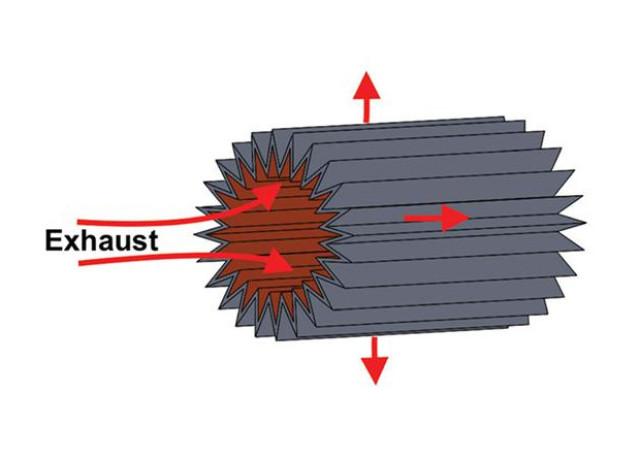Researchers from the Massachusetts Institute of Technology (MIT) have proposed the use of catalysts in aircraft engines. According to Aviation Week, it is assumed that in this way it will be possible to reduce emissions of nitrogen oxides that affect global climate change. The researchers intend to develop a catalyst for aircraft engines using technologies used in such devices for trucks.
Catalysts in cars are used to solve two tasks simultaneously. Such devices produce a catalytic reduction of nitrogen oxides, and the oxygen released during the reaction is used for the oxidation of carbon monoxide and afterburning of unburned fuel. In aircraft engines, catalysts are not used because of their extremely low efficiency when pumping large volumes of air through devices.
In modern turbofan engines, the specific mass velocity of the gas flow is 25-30 kilograms per second, while the most productive catalysts are still designed for an average of one kilogram per second. In addition, the installation of a catalyst in an aircraft engine will lead to a drop in the efficiency of the turbine, which will have to increase the volume of fuel consumption.
MIT believes that the catalysts can be used on aircraft engines with an ultra-high degree of dual-circuit and gas turbine generators of hybrid aircraft. The fact is that in such engines, the specific mass velocity of the gas flow through the gas generator is significantly less than in conventional turbofan engines.
According to preliminary estimates of the researchers, the use of ammonia catalysts on narrow-body aircraft will reduce the amount of nitrogen oxide emissions by 95 percent. At the same time, the installation of the catalyst will lead to a slight increase in the mass of the aircraft, which will lead to an increase in fuel consumption by 0.5 percent. The catalyst for aircraft engines is supposed to be made corrugated. The length of the device will be 2.2 meters, and the diameter-1 meter.
Today, airlines and aircraft developers are forced to look for ways to reduce the amount of harmful emissions. In particular, airlines that have adopted the recommendations of the International Civil Aviation Organization should maintain the level of carbon dioxide emissions no higher than the level of 2020. In addition, air carriers need to reduce emissions of harmful substances by 50 percent by 2050 compared to the level of 2005.
Vasily Sychev

